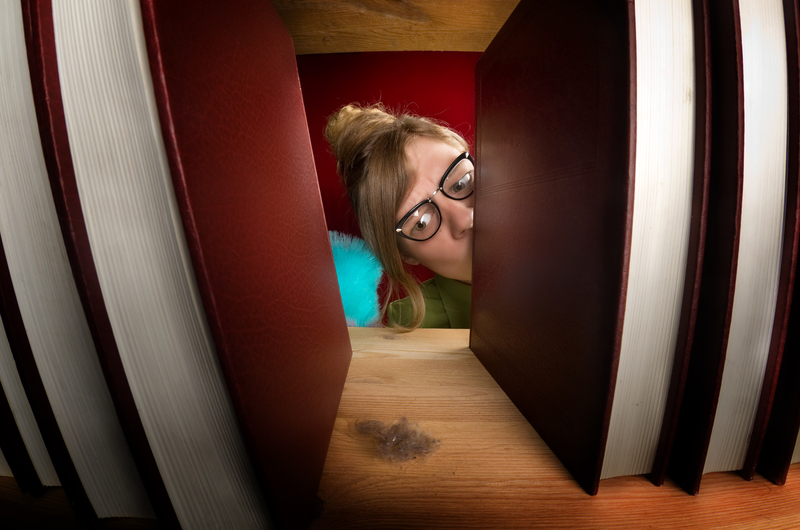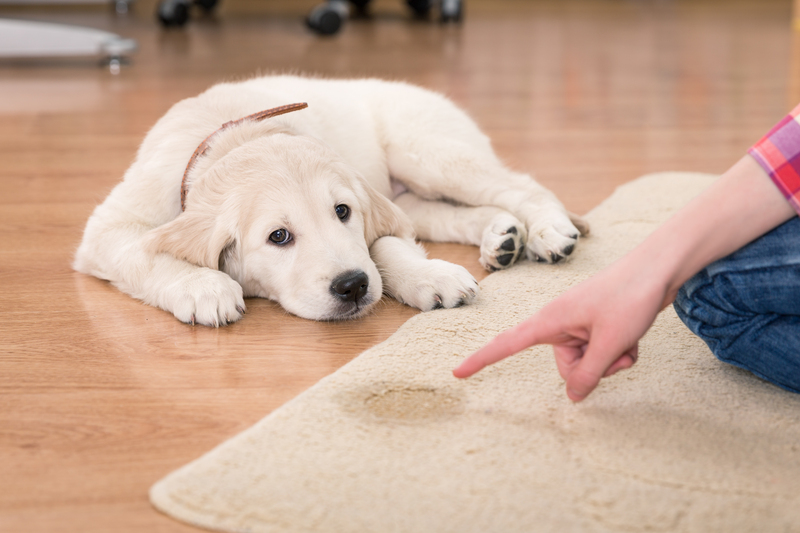Your Guide to Getting Rid of That Persistent Damp Smell
Posted on 14/08/2025
Your Guide to Getting Rid of That Persistent Damp Smell
Are you constantly battling a persistent damp smell in your home or office? That unpleasant odor can be both embarrassing and worrying, often pointing to deeper issues like moisture buildup or even mold. In this comprehensive, SEO-optimized article, we'll walk you through everything you need to know about eliminating damp odors for good. From uncovering causes to cleaning tips and prevention strategies, you'll find targeted solutions to banish that musty scent and reclaim fresh air in your space.
Understanding the Causes of Damp Smells
A musty, damp odor is more than just an inconvenience -- it can be a sign of hidden moisture problems with potential impacts on your property and health. Before taking action, it's important to understand the root causes behind the constant damp smell.
Common Sources of Persistent Damp Odors
- Poor Ventilation: Insufficient air flow traps moisture, allowing it to accumulate in areas like basements, bathrooms, and closets.
- Excess Humidity: High humidity, especially in poorly ventilated spaces, promotes a musty environment.
- Leaks and Water Damage: Hidden leaks from pipes, the roof, or windows permit water intrusion, leading to dampness and the telltale smell.
- Condensation: When warm, moist air meets cold surfaces, condensation forms, allowing mold and mildew to flourish.
- Mold and Mildew: Once established, fungus spreads rapidly and emits pungent odors, aggravating the problem.
- Damp Materials: Carpets, curtains, clothing, and even furniture can absorb ambient moisture, exacerbating the musty stench.
The Importance of Addressing Damp Odors Promptly
Ignoring a damp smell that won't go away can lead to more than discomfort. Persistent moisture may degrade building materials, lower property value, and foster health issues such as respiratory irritation or allergies, especially for vulnerable individuals. Tackling the scent at its source is essential for both well-being and property maintenance.

Detecting the Source of the Damp Smell
The first step to ending a persistent musty odor is pinpointing its origin. Here's a step-by-step guide to uncover the culprits:
1. Inspect Common Problem Areas
- Check under sinks, around toilets, and behind appliances for leaks.
- Check walls, ceilings, and floors for discoloration, peeling paint, or warped surfaces.
- Smell fabrics, carpets, and closets to identify damp items absorbing moisture.
- Inspect attics, basements, and crawlspaces for standing water or signs of water entry.
2. Use a Moisture Meter
A moisture meter is a handy tool to detect hidden dampness behind walls or inside flooring that isn't immediately visible.
3. Look for Mold & Mildew
Visible mold--often black, green, or white--thrives in damp environments. A persistent musty smell frequently points to mold colonies growing out of sight. Use a flashlight in dark corners and beneath furniture to spot it.
4. Assess the Smell's Intensity and Location
Follow your nose! A strong damp odor that's worse in certain rooms or after rainfall usually indicates a localized source like a nearby leak or humidity trap.
Effective Methods for Getting Rid of Persistent Damp Smell
Once the origin is identified, it's time to neutralize damp odors for good. For best results, use a combination of the following techniques:
Immediate Steps for Quick Relief
- Increase Air Circulation: Open windows and doors daily. Use fans to boost airflow and dissipate odors quickly.
- Dehumidify: Deploy a dehumidifier to maintain indoor humidity between 30-50%. This slows mold growth and dries out musty materials.
- Remove Damp Items: Dry or discard water-damaged items (rugs, cushions, clothes) since they can harbor long-lasting odors.
- Apply Natural Odor Absorbers: Place bowls of baking soda, activated charcoal, or white vinegar in affected rooms to absorb smells.
- Clean Thoroughly: Wash and air out curtains, linens, and soft furnishings. Use hot water for best results.
Deep Cleaning and Mold Removal
A surface clean may mask smells, but long-term elimination of musty odors requires targeting the dampness at its source.
- Scrub Surfaces: Clean tiles, grout, and hard surfaces with a mix of water and vinegar or a commercial anti-mold solution. Pay special attention to hidden corners and grout lines.
- Use Mould Inhibitors: After scrubbing, spray a fungicidal wash to prevent mold from returning.
- Replace Unsalvageable Materials: Severely affected carpets, drywall, or furnishings may need replacement to fully eliminate the odor source.
Drying Out the Space
To thoroughly get rid of dampness, it's vital to remove as much moisture as possible:
- Use an electric dehumidifier day and night for at least a week in the problem area.
- If safe, utilize heaters to accelerate drying, especially after a flood or leak.
- Open windows periodically to exchange stale, musty air with fresh outdoor air.
- In warm weather, direct fans at damp floors or walls.
Purifying the Air
For lingering odors, air purifiers with HEPA and activated carbon filters are especially effective at removing odor molecules and allergens from the air.
Natural Odor Neutralizers for Persistent Musty Smell
- Sodium Bicarbonate (Baking Soda): Leave open trays of baking soda in damp cupboards and closets for several days.
- White Vinegar: Fill shallow dishes and place them overnight in musty-smelling rooms.
- Activated Charcoal: Use bags or pouches in wardrobes or behind furniture to soak up both moisture and odors.
- Coffee Grounds: Used coffee grounds in a container can also absorb stubborn smells.
*Tip: Always ensure adequate ventilation when using these methods for best results!
Preventing the Return of Damp Odors
Once you've banished that persistent damp smell, it's important to take proactive steps to keep the musty scent from returning. Here's how to prevent future problems:
1. Control Indoor Humidity
- Keep an eye on humidity with a hygrometer, aiming for 30-50% indoor humidity.
- Run a dehumidifier in humid months or in trouble-prone areas (basements, bathrooms, laundry rooms).
2. Improve Ventilation
- Use exhaust fans in bathrooms and kitchens.
- Open windows regularly, even in winter, to let moisture escape.
- Install trickle vents or air bricks in older homes if feasible.
3. Address Water Leaks Immediately
- Inspect plumbing and roofing annually for leaks.
- Seal gaps around windows, doors, and pipes with waterproof caulking.
- Direct water away from your property's foundation with functional gutters and downspouts.
4. Dry Wet Items Quickly
- Launder damp clothes, towels, and sheets promptly.
- Hang laundry outside if possible, or use a vented dryer indoors.
- After flooding or leaks, dry flooring and walls within 24-48 hours to prevent mold growth.
5. Maintain Regular Cleaning
- Vacuum and clean carpets to prevent dust, mold, and damp buildup.
- Wash and dry soft items periodically to keep them fresh.
- Declutter to promote air circulation in closets and cupboards.
6. Waterproof Problem Areas
- Treat basement walls and floors with a waterproof barrier if persistent dampness is an issue.
- Lined curtains or moisture-resistant insulation can help in vulnerable rooms.
When to Call the Professionals
If despite your best efforts, the damp, musty smell persists, or if you spot widespread mold growth, it's time to seek expert help. Professional damp-proofers and mold remediation specialists can:
- Detect hidden leaks in walls, floors, and roofs using advanced tools.
- Test for black mold (Stachybotrys chartarum) or other hazardous fungi.
- Safely remove large or toxic mold infestations.
- Implement long-term solutions to prevent recurrence, including structural repairs and advanced waterproofing.
Health Warning: People with respiratory conditions, allergies, or immune issues should avoid contact with mold and seek urgent remediation for damp and mold odors.

Frequently Asked Questions (FAQs)
Q: Can air fresheners solve a persistent damp smell?
A: Air fresheners only mask odors temporarily. For lasting removal of persistent musty smells, you must address the underlying moisture problem.
Q: Is the musty smell dangerous?
A: A damp smell itself is unpleasant, but if it's caused by mold, exposure can affect health, especially for children, seniors, and those with allergies or asthma.
Q: How long does it take to get rid of the musty scent?
A: If the source is eliminated and the area is dried thoroughly, you may notice improvement within 48-72 hours. Persistent cases, especially with mold or ongoing leaks, may take longer.
Q: What are the best products for eliminating a damp smell?
A: Baking soda, white vinegar, activated charcoal, and commercial enzyme cleaners are all effective for neutralizing odors.
Conclusion: Enjoy Fresh, Odor-Free Spaces
*A persistent damp smell isn't just a nuisance -- it's a signal that your environment needs attention.* By understanding the sources, acting quickly with targeted **remedies**, and investing in prevention, you can ensure your home or workspace remains fresh and welcoming. Prioritize good ventilation, prompt leak repairs, and regular cleaning to keep dampness and musty scents at bay year-round. Remember, for severe problems, don't hesitate to consult professionals for thorough and lasting solutions.
Stay proactive, and enjoy the comfort and confidence of a truly fresh-smelling space!


